Kistler Craved Full Hollowbody Carved F Style Archtop
| Manufacturer | Kistler |
|---|---|
| Guitar Type | Archtop Hollow Body |
| Lower Bout Width | 15.87″ |
| Body Depth | 1.73″ |
| Nut Width | 1.75″ |
| Fingerboard Scale | 24.75″ |
| Pickup Type | 1 Set Humbucker |
| Wood Composition | Carved Solid |
| Tonewoods | Mahogany, Spruce |
| Fretboard | Ebony |
| Bridge | Floating |
| Finish | Blonde |
Price $5,995
Out of stock
Kistler Guitars,off great balanced , good sustain, neck feels great, comfortable. And this common comment I loved: “it sounds like a bigger guitar”
Product Description
Sakashta like feel, with a more complex tone
Specs:
upper bout: 11-1/2”
lower bout: 15-5/8”
thickness: 1-3/4” at the rim
scale: 24-3/4” (Gi bson scale)
bone nut: 1-3/4”
carved spruce top with parallel bracing
carved back and sides: Spruce, Mahogany
body frame is curved on the inside—sort of like a bicycle tire.
pick up: Kent Armstrong, custom wound humbucker
truss rod : double action rod
ebony fret board, bridge, tailpiece, control knobs, truss rod cover and peg (that holds the tail piece)
strings are grounded
tuners: Gotoh 510 gold with black knobs
BIO: Where did I learn to build a guitar?
When Dennis Kistler was twelve, he had a vision. I wanted my skateboard to look like a surfboard. In Southern California surfboards were just evolving into slick fiber-glass foam boards with redwood/balsa strips running through them. The skateboard of my era was a 2×4 with adjustable steel skates—usually donated from someone’s sister–pulled apart and nailed to each end. I knew what to do, but I needed use of my father’s power tools, especially the table saw, so I kept asking. Eventually he relented, “Everything but the jointer,” he said, fearful I’d drag my finger through it. Soon my skateboard had a fiberglass-resin finish, redwoods strips and the shape of a surfboard. This was cool, and I made more for the neighborhood. Later it was doll furniture for my sisters and a trailer to haul my surfboard behind my bicycle. When I acquired an old lawn mower engine, I made a wooden go-kart. Freedom with tools was a gift from my father.
As a young adult I built on those early skills, sometimes working as a cabinet/furniture maker and carpenter. I was in and out of college, flew helicopters in the army and finally, then with help from the GI bill, completed a BA at Berklee College of Music. With no job and no money, it was, once again, my woodworking skills that provided an income. Starting with handyman stuff, to cabinets and furniture, to additions- renovations and custom homes, I built a reputation for good work. Along the way I hired someone who had been building racing yachts; he was an over qualified helper, so I made him my partner. Together we built a business noted for quality and craftsmanship. www.kistlerandknapp.com
In the beginning we did everything, but success meant more management and less hands-on craft. My need to make things, however, lived on. I’ve always maintained a small shop at home. Over the years I had built a few guitars, repaired several others, and learned to do my own guitar setups. Then I had a new vision.
H model guitar
I’m a guitar player wanted a smaller, more comfortable guitar that could hold its own in an ensemble, wouldn’t feedback and still had that warm jazzy sound. I measured a half dozen archtops looking for the qualities I liked best. I put body and neck profiles on transparencies so I could overlay them and see the differences. I have a Gibson 120T, which is fun to play (just don’t plug it in); it has the upper and lower bout proportions similar to my vision. I had made a travel guitar with rounded details and saw other guitars with rounded sides (most notably those of the late Sakashta ). I had no real idea how this would shape the sound; it just looked cool. I built two prototypes. To my delight the guitar performed well. I gigged with the first one for a year and loaned the second to accomplished jazz players in my area. The response was positive. Typical comments were: balanced tone, good sustain, neck feels great, comfortable. And this common comment I loved: “it sounds like a bigger guitar”. Here’s a youtube link of Gustavo Assis-Brasil playing the #2 prototype. http://youtu.be/8XIuHDtoLRg
CNC machine
If I was going to continue making guitars, I needed relief from repetitive motion that wreaks havoc on my hands and elbows, so I invested in a cnc machine. This was like starting all over. I had to learn three new computer programs—a tall order for an old dog like me—and build a whole new set of jigs. This took another year. I’m now about three years into my “new vision”. As a player, this guitar is my all-time favorite. But best of all, hearing other musicians play my guitars, now that’s a really cool thing.
Specifications
| Body: | 17″ Lower Bout |
| Body Depth: | 3″ |
| Nut Width: | 2 1/8″ |
| Finger Board Scale: | 25″ |
| Top: | AAA Spruce – hand carved & tap tuned |
| Back: | Hand carved Figured Maple |
| Neck: | Figured Maple |
| Rims: | Figured Maple |
| Finger Board: | Bound Ebony – Book Pearl Inlays $300 Optional |
| Truss Rod: | Adjustable |
| Binding: | White & Black Multiple PlyWood binding optional |
| Pick Guard: | Ebony – w/ binding $150 Optional |
| Bridge & Base: | Ebony w/Thumb Wheel Adjustment |
| Tailpiece: | Ebony carved |
| Tuning Machines: | Grover Imperial |
| Pickup: | Kent Armstrong routed set humbucker w/ volume and tone thumb wheels |
| Color: | Blonde, Sunburst, Violinburst, Natural |
| Case: | 5-ply custom Cedar Creek |
About Palen
 Nelson Palen started building his acoustic archtop Palen Guitar in November, 1998 and finished it the last week in June, 1999. He read the book and viewed the 6-hour video by Bob Benedetto, who has been building guitars and violins for 30 years and is considered the premier archtop builder in the country. The Palen archtop is unique in that the soundboard and back are carved from wood approx. 1″ thick to a domed shape similar to that found on a violin.
Nelson Palen started building his acoustic archtop Palen Guitar in November, 1998 and finished it the last week in June, 1999. He read the book and viewed the 6-hour video by Bob Benedetto, who has been building guitars and violins for 30 years and is considered the premier archtop builder in the country. The Palen archtop is unique in that the soundboard and back are carved from wood approx. 1″ thick to a domed shape similar to that found on a violin.
Before Nelson made Palen archtops, he had been making decorative wooden bowls as shown here for approx. 12 years. His woodworking skills and attention to detail began here and from his ancestry. His dad, Benedict Palen, has been doing woodwork since the 1930’s starting out with a pedal-powered lathe. His dad’s enterprise, Artistic Woodcrafts started with a Shopsmith and then homebuilt a heavy-duty lathe capable of swinging up to 32″ diameter blanks.. The blanks for the bowls are made up of segmented rings stacked and glued. Various wood species, domestic and foreign are used. Examples are walnut, white gum, padauk, wenge, mahogany etc. Nelson Palen added a CNC desktop mill in 1998 that can be mounted on the lathe for engraving. The spindle is slowly rotated by computer command with approx. 1000:1 reduction. The basic turning operation is done with conventional hand tools.
Product Enquiry
Be the first to review “Kistler Craved Full Hollowbody Carved F Style Archtop”
You must be logged in to post a comment.
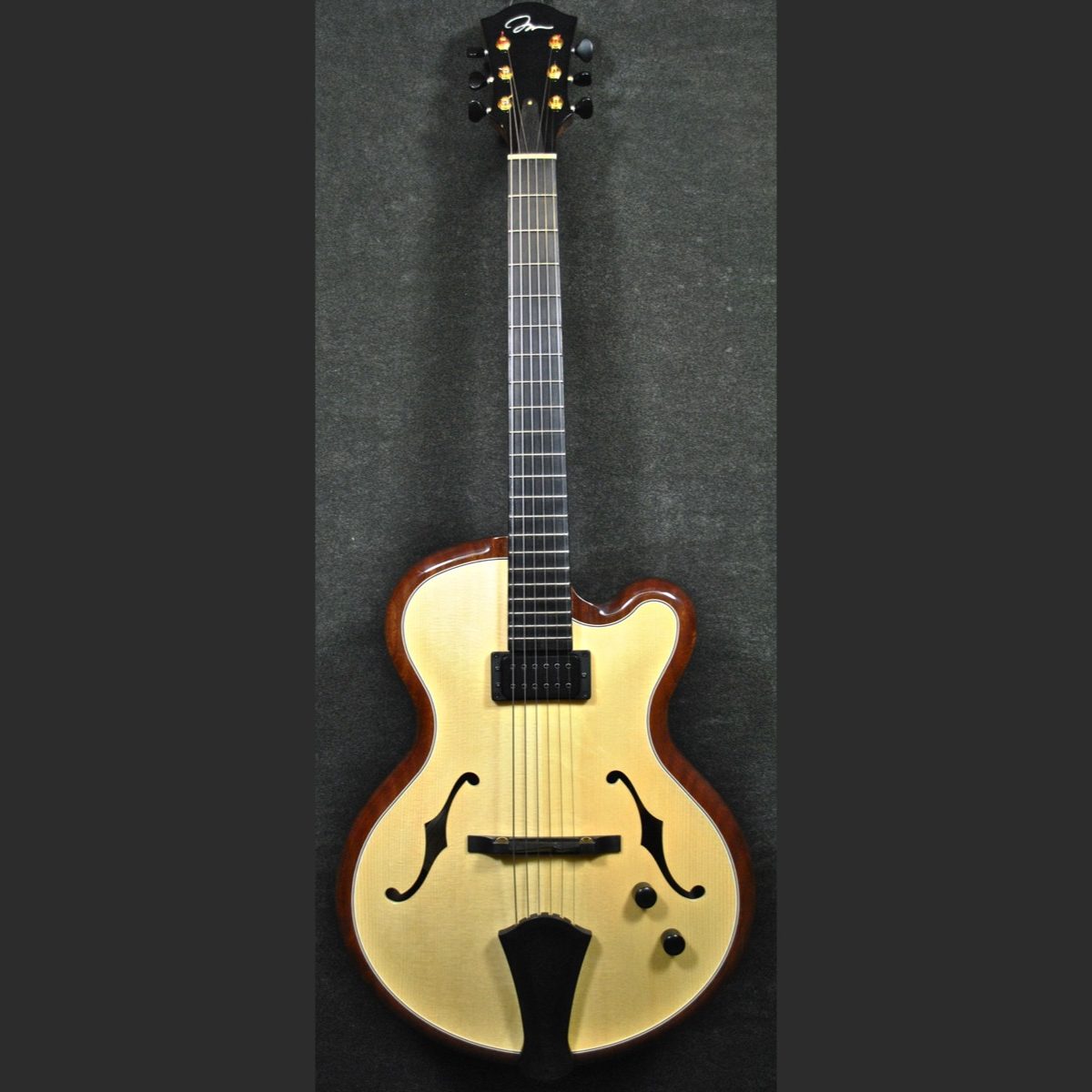
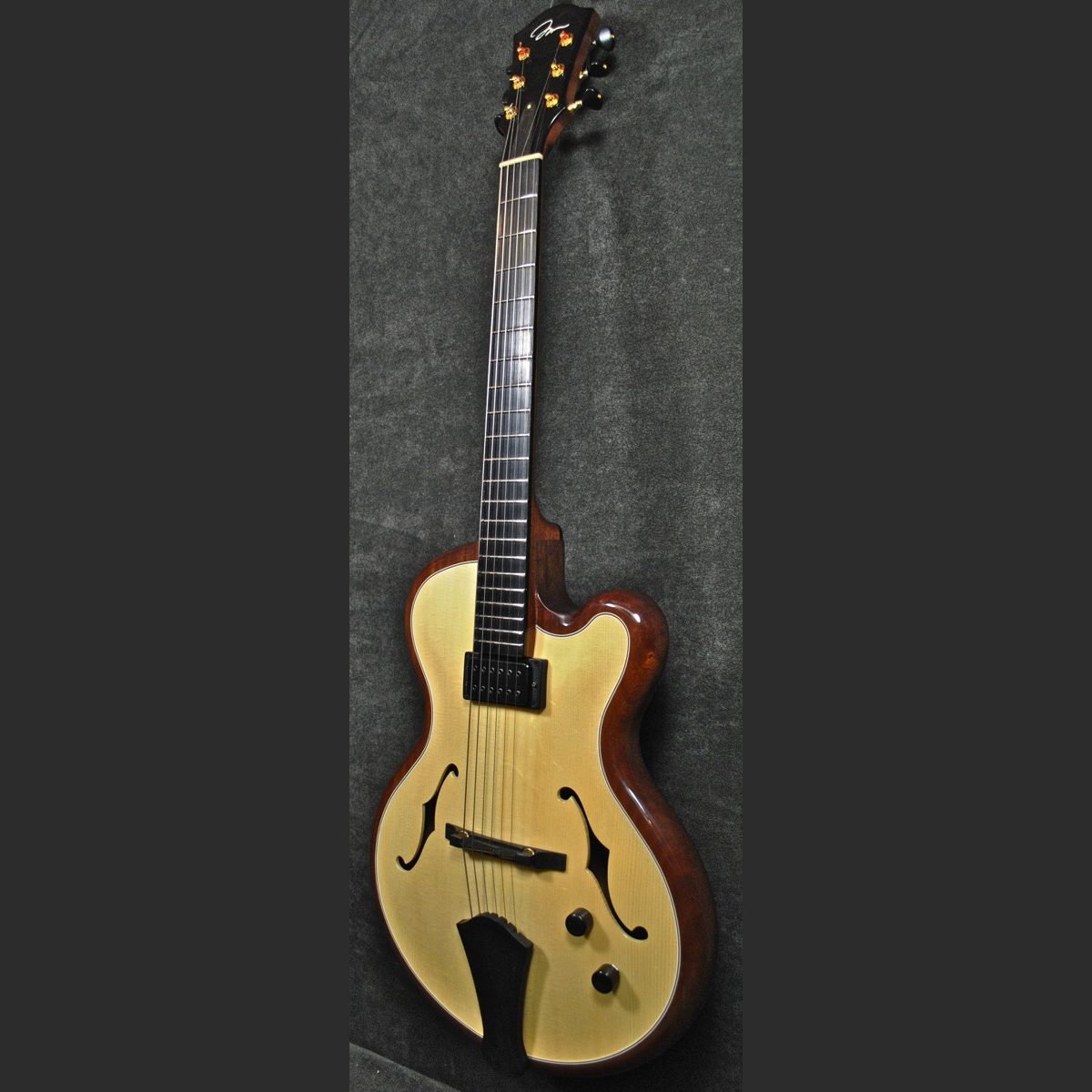
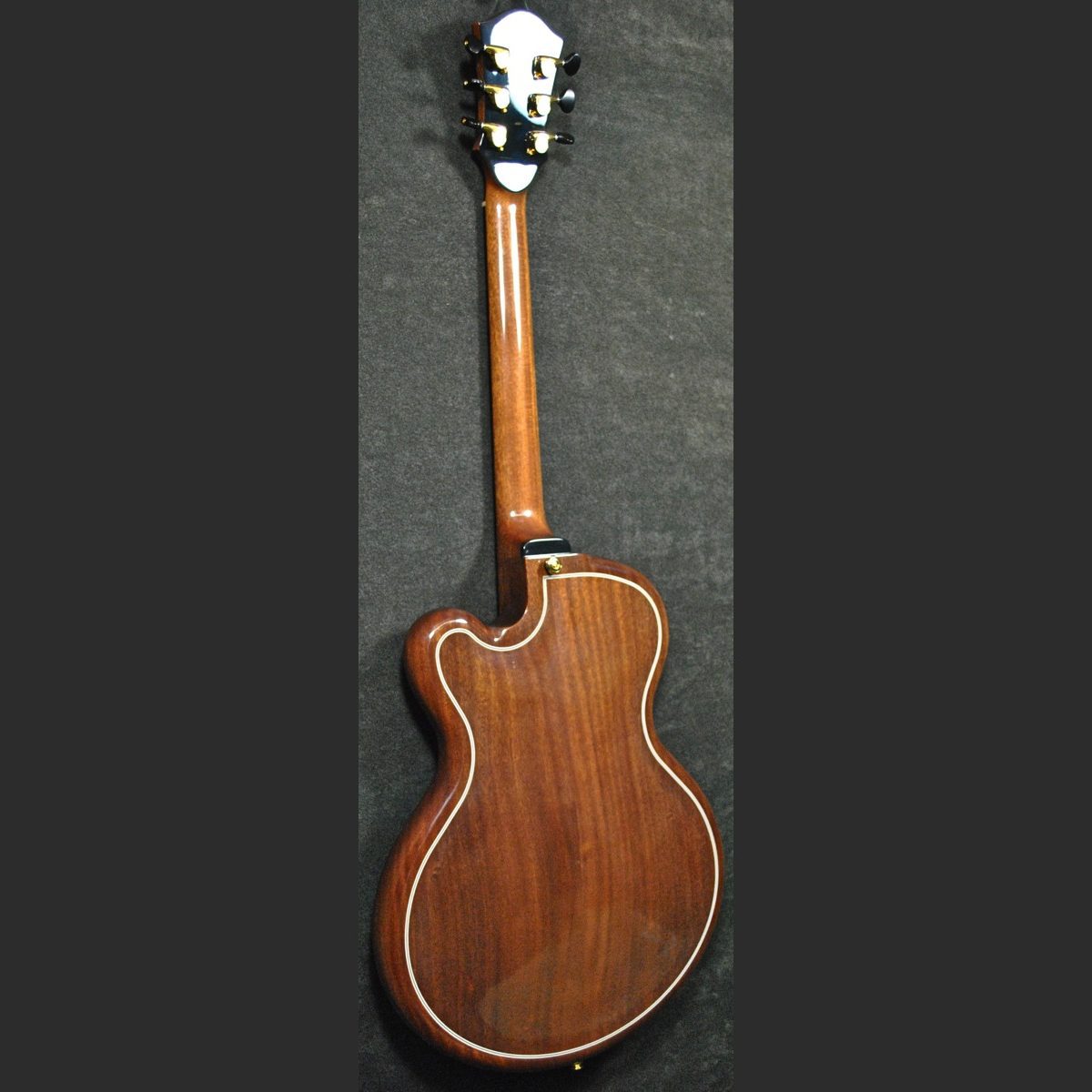



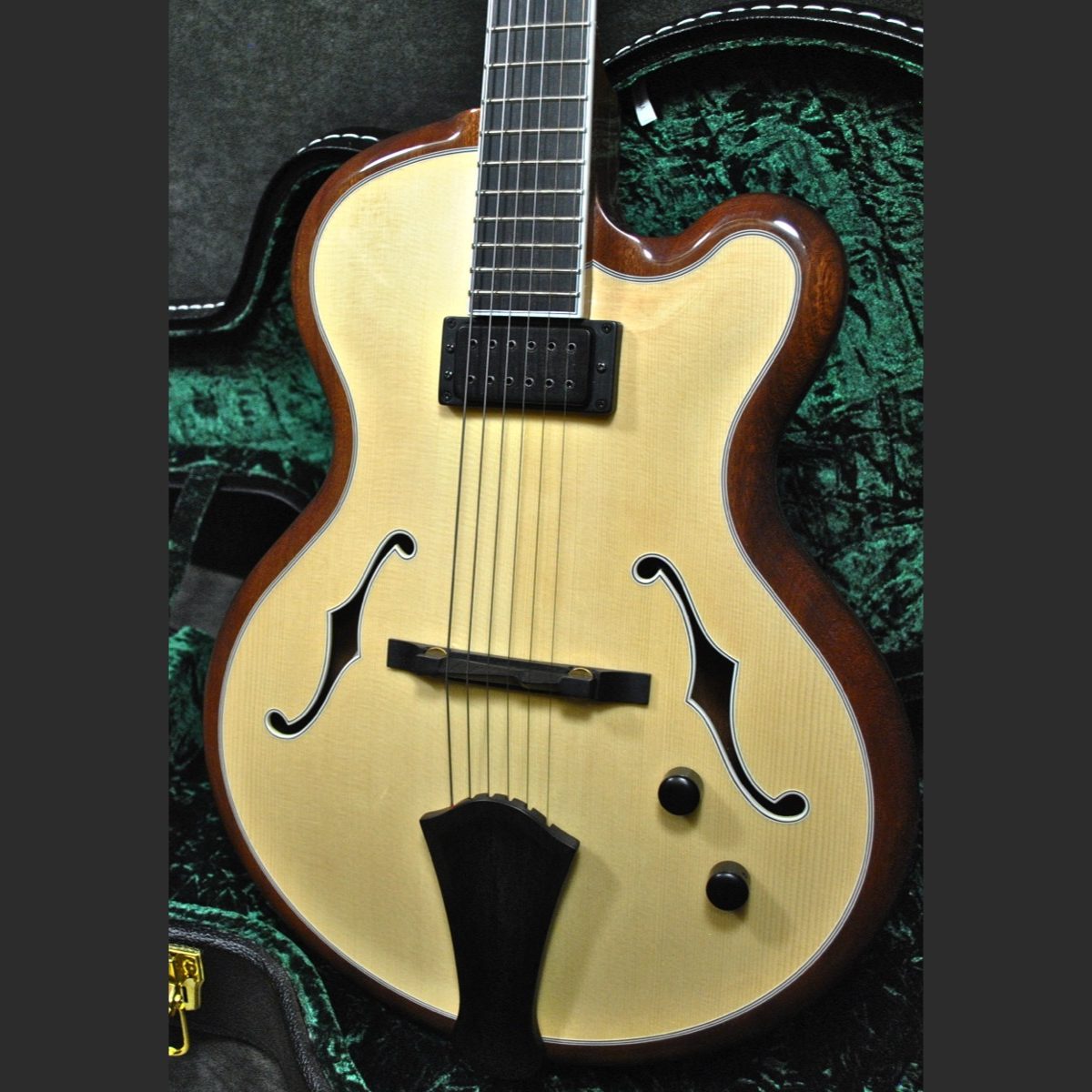
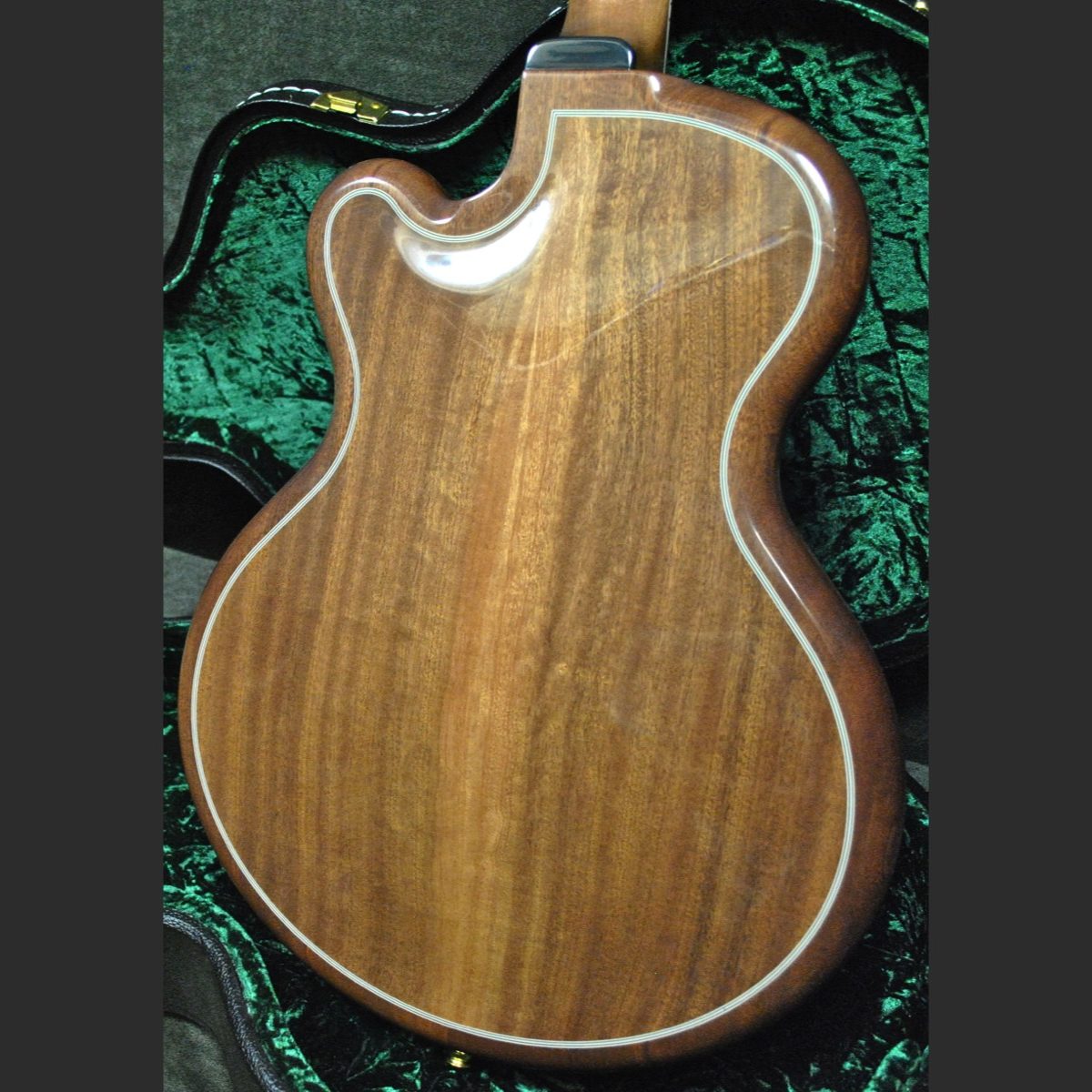

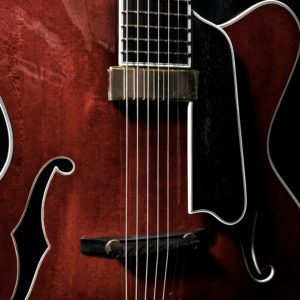
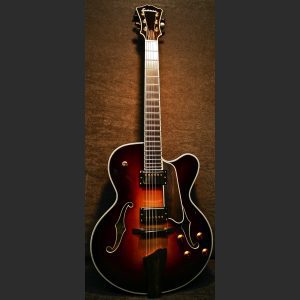
Reviews
There are no reviews yet, would you like to submit yours?